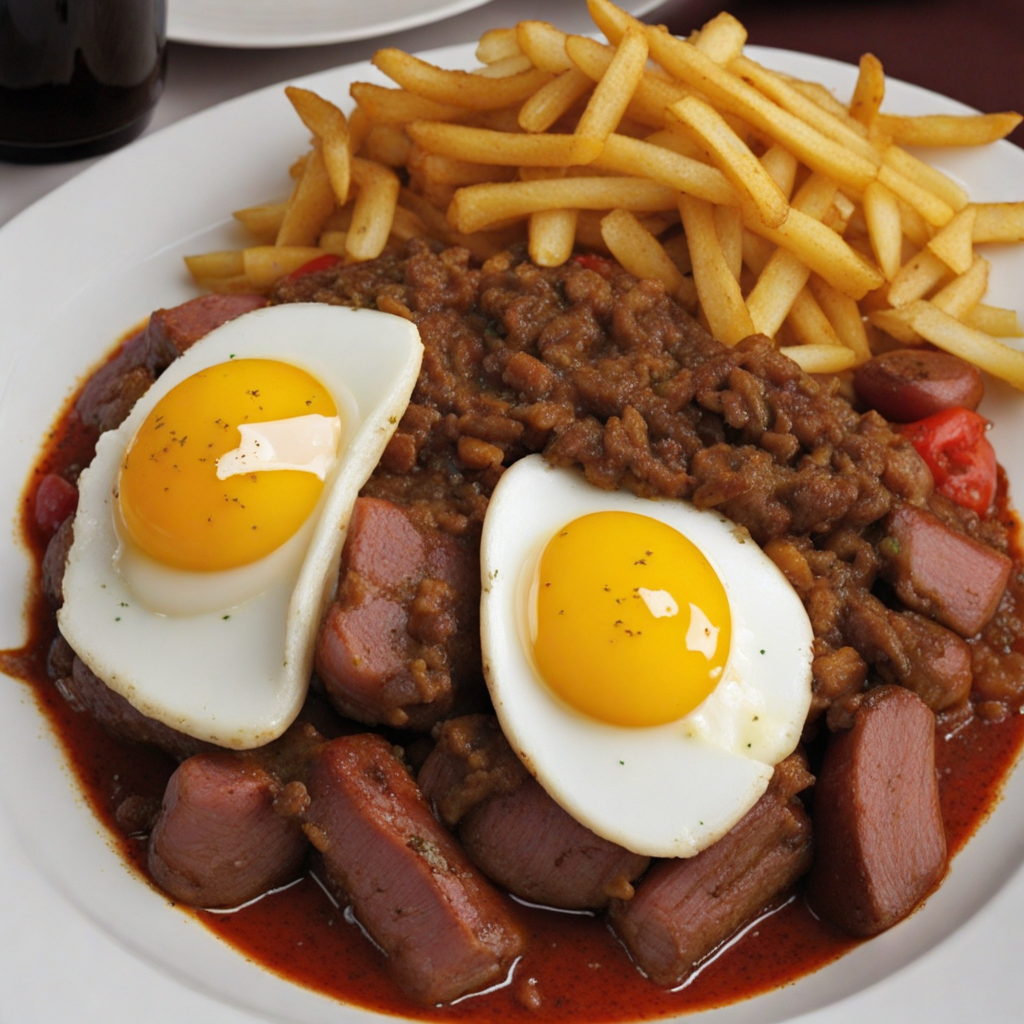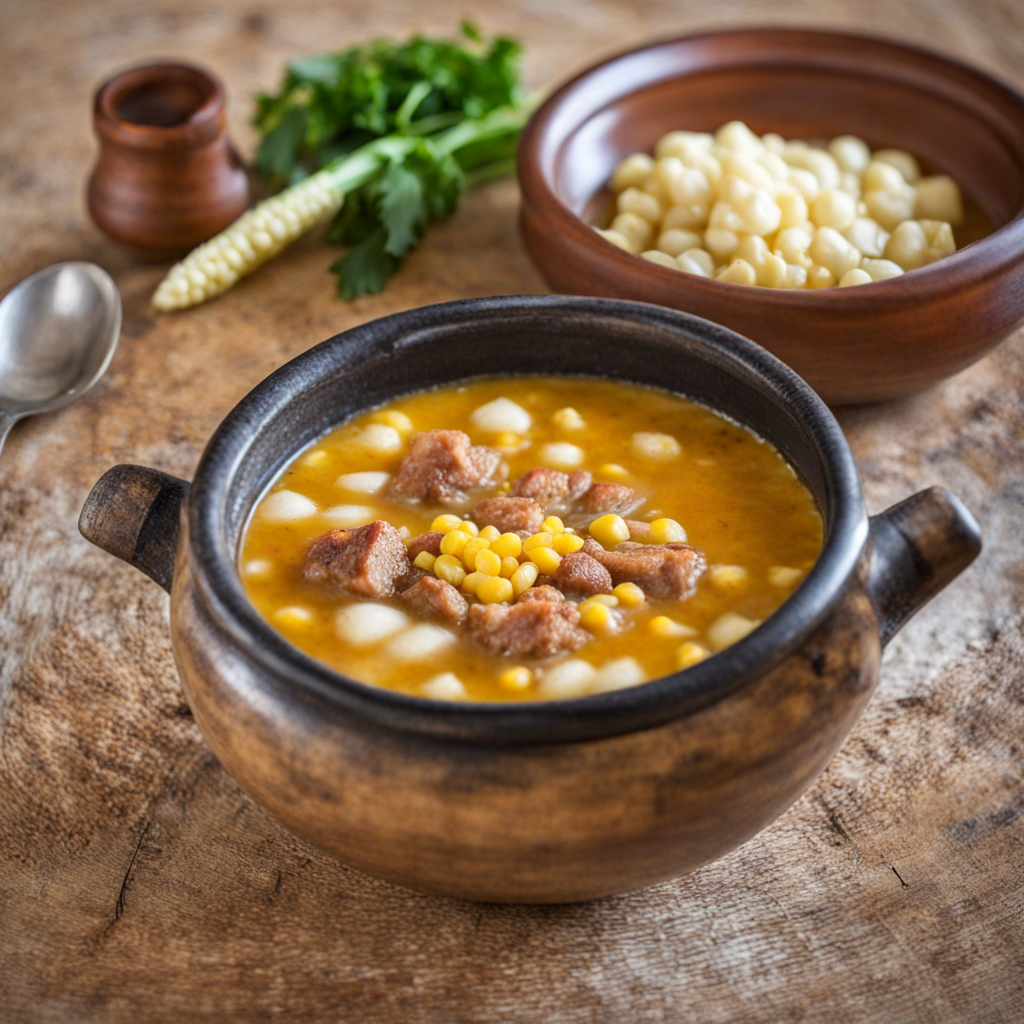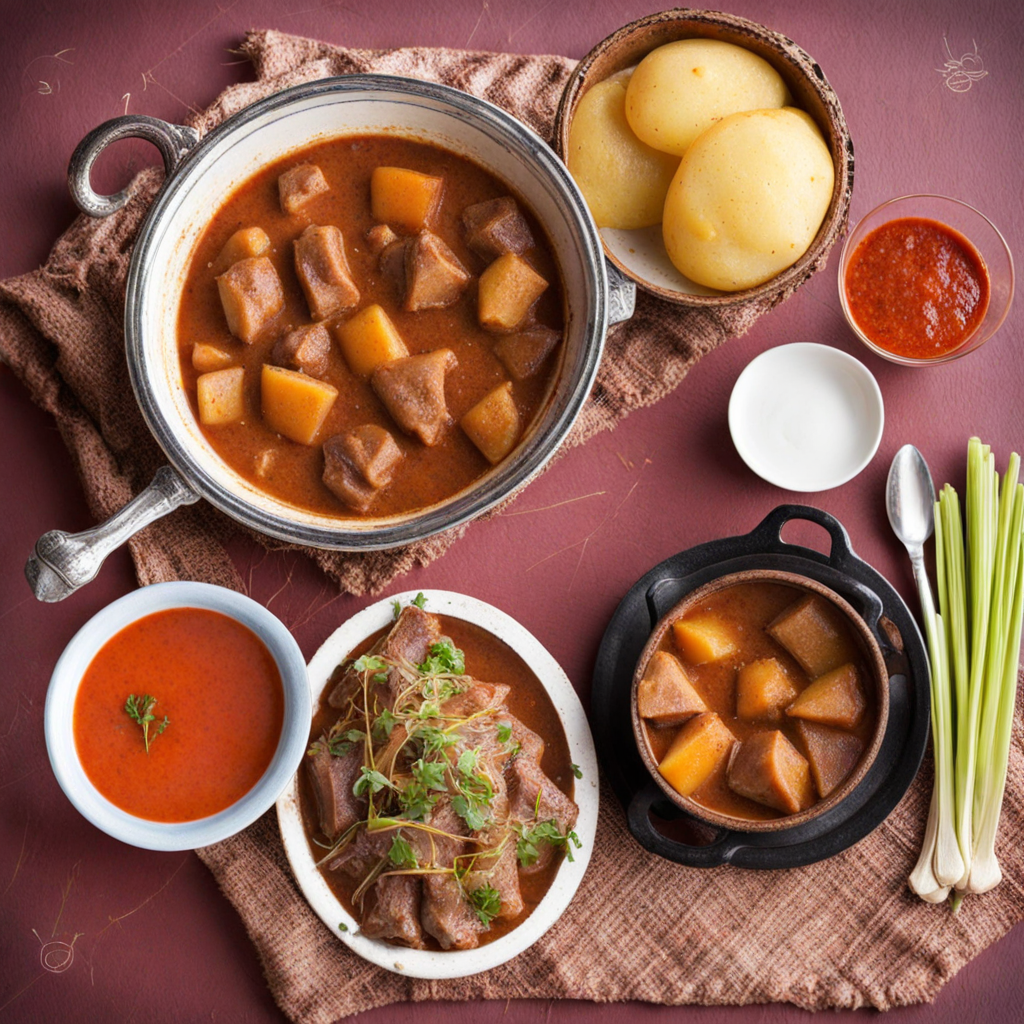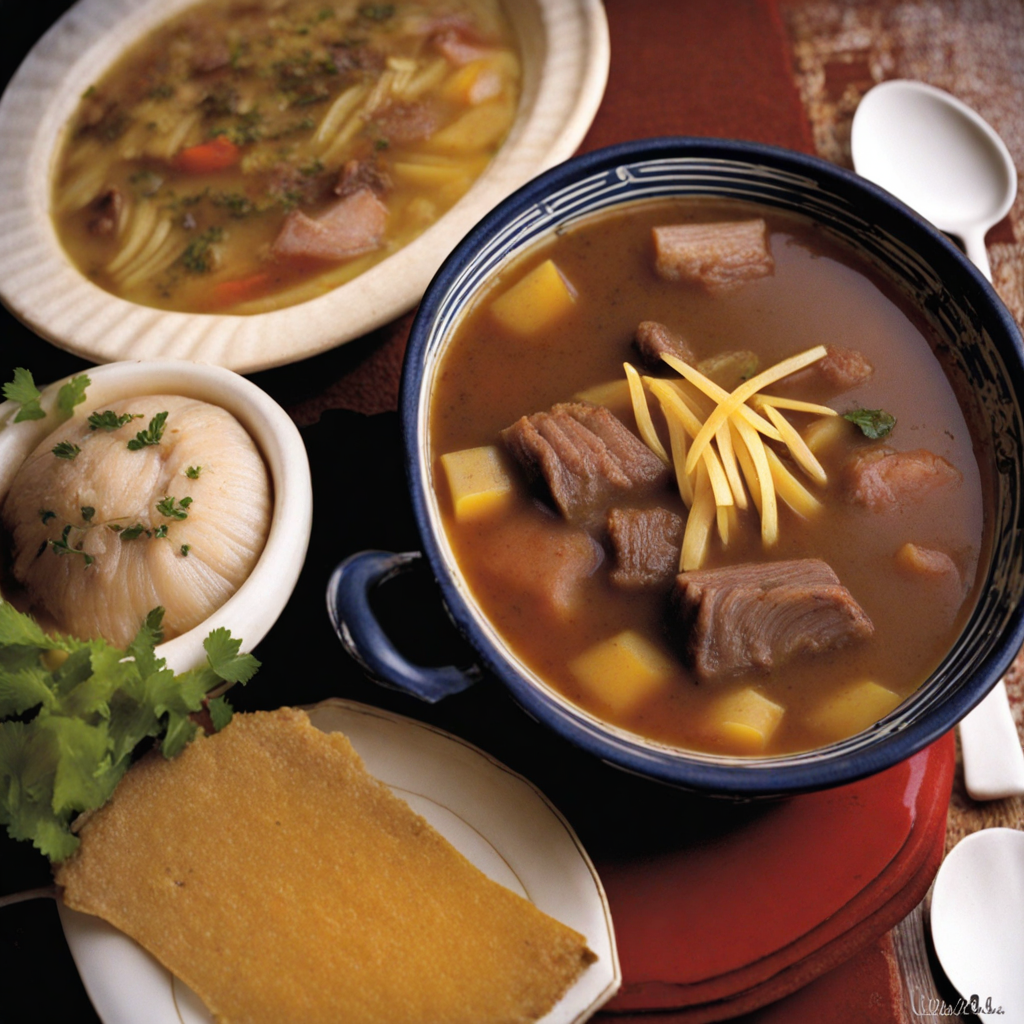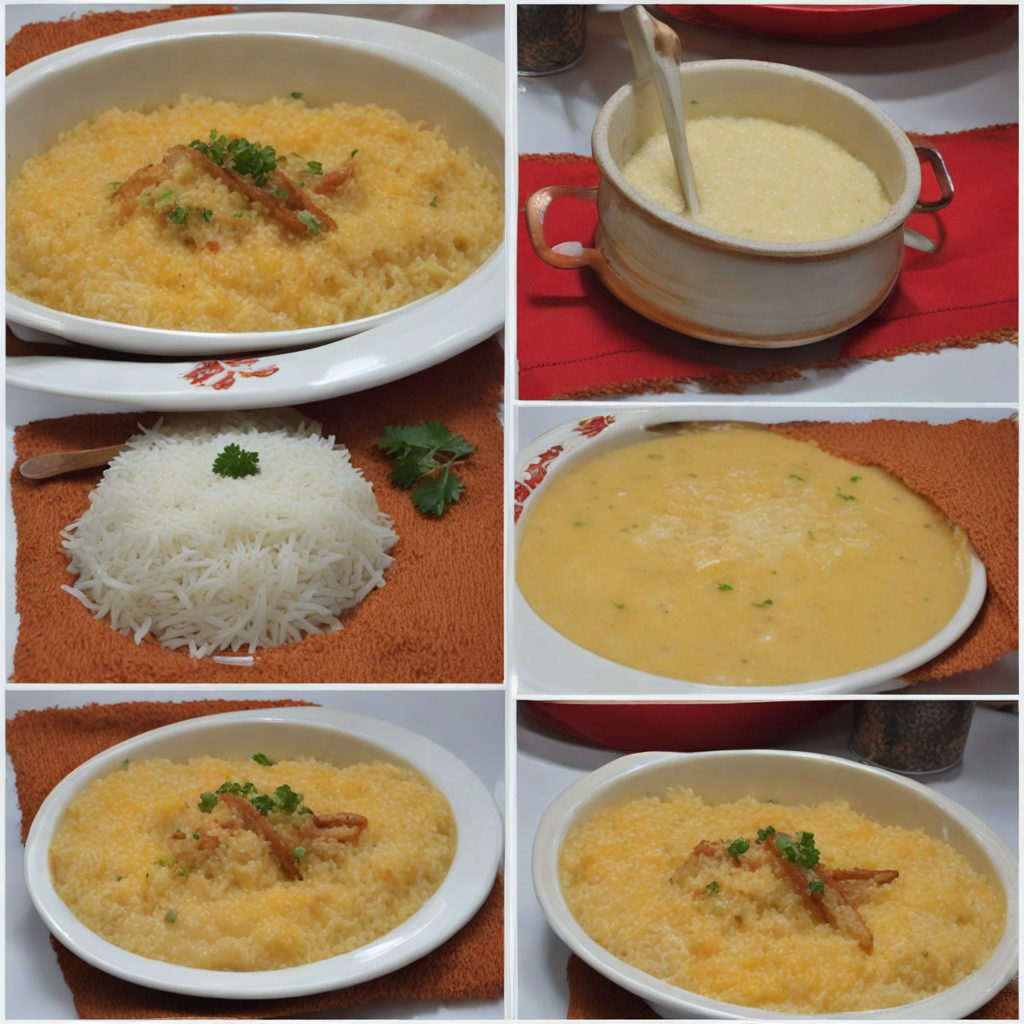Pique a lo Macho
Pique a lo Macho is a vibrant and hearty Bolivian dish that showcases the rich flavors and culinary traditions of the Andes. At its core, this dish features a base of tender, juicy strips of beef, which are typically sautéed to perfection, ensuring they are both succulent and flavorful. The beef is complemented by a medley of colorful bell peppers, onions, and tomatoes, which not only add a delicious crunch but also contribute to the dish's eye-catching appearance. The combination of these ingredients, sautéed together, creates a mouthwatering aroma that beckons food lovers to indulge in its savory goodness. To elevate the dish further, Pique a lo Macho is generously topped with crispy fried potatoes, giving it a delightful texture that contrasts beautifully with the tender meat and vegetables. This classic Bolivian dish is often spicy, with a kick of heat from traditional Bolivian spices, such as ají, which adds depth and complexity to the overall flavor profile. The use of seasonings ensures that every bite is a tantalizing experience, bursting with the essence of Bolivian cuisine. Served with a side of hard-boiled eggs and sometimes accompanied by a fresh salad or a drizzle of tangy sauce, Pique a lo Macho is not just a meal, but a celebration of flavors. This dish is perfect for those looking to explore the bold and diverse tastes of Bolivia, making it a must-try for anyone seeking a new culinary adventure. With its hearty ingredients and vibrant presentation, Pique a lo Macho promises to delight your palate and introduce you to the warmth of Bolivian hospitality.
How It Became This Dish
The History of Pique a lo Macho: Bolivia's Hearty Delight Pique a lo Macho is a vibrant Bolivian dish that encapsulates the rich culinary tapestry of the Andean nation. Known for its bold flavors and hearty ingredients, this dish represents not only the gastronomic preferences of Bolivians but also their cultural identity and social dynamics. To fully appreciate Pique a lo Macho, one must explore its origins, its evolution, and the cultural significance it holds in Bolivian society. #### Origins: A Culinary Confluence Pique a lo Macho is believed to have originated in the city of Cochabamba, often referred to as the “Garden City” due to its fertile valley and abundance of agricultural produce. The dish is traditionally made with thinly sliced beef, which is sautéed and served with a medley of ingredients that may include boiled eggs, sausages, bell peppers, onions, and a generous drizzle of spicy sauce. The name itself, translating to "poke the macho," reflects a certain bravado associated with the dish, suggesting a hearty meal meant to satisfy the appetite of strong men. The precise origins of Pique a lo Macho are somewhat murky, but it is widely accepted that it emerged in the mid-20th century. The dish is thought to have been inspired by various influences, including Spanish, indigenous, and other Latin American cuisines. The incorporation of ingredients like sausage and chili peppers highlights the fusion of flavors that characterize Bolivian cooking. These ingredients not only deliver a punch of flavor but also signify the country's diverse agricultural landscape, where a plethora of vegetables and meats are readily available. #### Cultural Significance: More Than Just a Meal In Bolivian culture, food often goes beyond mere sustenance; it is an expression of identity and community. Pique a lo Macho is frequently enjoyed during social gatherings, family celebrations, and local festivals. The dish is commonly served in restaurants and eateries across Bolivia, especially in Cochabamba, where it has become a staple on menus. Its popularity reflects the communal aspect of dining in Bolivia, where sharing a hearty meal fosters connections among friends and family. Moreover, Pique a lo Macho is often associated with masculinity. The robust nature of the dish and its name evoke images of strength and virility, making it a popular choice among men. This association is not merely cultural; it also points to the historical context of Bolivian society, where traditional gender roles have been deeply ingrained. The dish has thus become a symbol of camaraderie among male friends and colleagues, often enjoyed with a cold beer or a glass of chicha. #### Development Over Time: From Street Food to Culinary Icon As Bolivia has evolved, so too has Pique a lo Macho. Originally a dish found in local markets and roadside stalls, it has transitioned into a culinary icon that is celebrated in both traditional and modern settings. The rise of gastronomy in Bolivia, with chefs and food enthusiasts keen on showcasing authentic local dishes, has further elevated Pique a lo Macho's status. In recent years, chefs have begun to experiment with the dish, incorporating gourmet twists while honoring its traditional roots. Variations may include the use of different proteins, such as chicken or vegetarian alternatives, and the addition of unique sauces that play with heat and flavor profiles. This adaptability speaks to the resilience of Bolivian cuisine, which remains rooted in tradition while embracing innovation. Pique a lo Macho has also gained recognition beyond Bolivia's borders. As global interest in Latin American cuisine has surged, food festivals, culinary tours, and online platforms have introduced this dish to international audiences. This exposure has not only expanded its fan base but has also encouraged a deeper appreciation for Bolivian food culture as a whole. #### Ingredients: A Flavorful Mosaic The ingredients of Pique a lo Macho tell a story of Bolivia's agricultural bounty. The base of the dish is typically made with lean beef, which is a staple protein in Bolivian households. Sautéed onions and bell peppers add sweetness and color, while boiled eggs contribute richness and texture. The dish is often topped with a spicy sauce made from a blend of chili peppers, garlic, and sometimes mayonnaise, which creates a delightful contrast to the other flavors. Another essential component is the inclusion of sausage, often a spicy variety, which imparts an additional layer of taste. The combination of these ingredients results in a dish that is not only filling but also bursting with flavor. Traditionally, Pique a lo Macho is served with a side of fried potatoes or rice, making it a complete meal that caters to the hearty appetite of its consumers. #### A Dish for the Future As Bolivia continues to navigate the complexities of globalization, Pique a lo Macho stands as a testament to the enduring nature of cultural heritage. While the dish has evolved, it remains a beloved comfort food that brings people together. It serves as a reminder of the importance of preserving culinary traditions while allowing for creativity and adaptation. Culinary tourism is on the rise in Bolivia, and Pique a lo Macho plays a pivotal role in attracting food enthusiasts eager to explore authentic flavors. It is often featured in cooking classes, where participants learn not only how to prepare the dish but also the stories behind its ingredients and cultural significance. #### Conclusion: A Culinary Legacy Pique a lo Macho is more than just a dish; it is a celebration of Bolivian culture, identity, and community. Its rich history reflects the confluence of various culinary influences, while its evolution showcases the resilience and adaptability of the Bolivian people. As it continues to delight both locals and visitors alike, Pique a lo Macho remains a proud emblem of Bolivia’s gastronomic heritage, inviting all to partake in its hearty embrace. Whether enjoyed at a bustling market or a fine restaurant, it is a dish that embodies the spirit of Bolivian cuisine—bold, vibrant, and deeply rooted in tradition.
You may like
Discover local flavors from Bolivia


